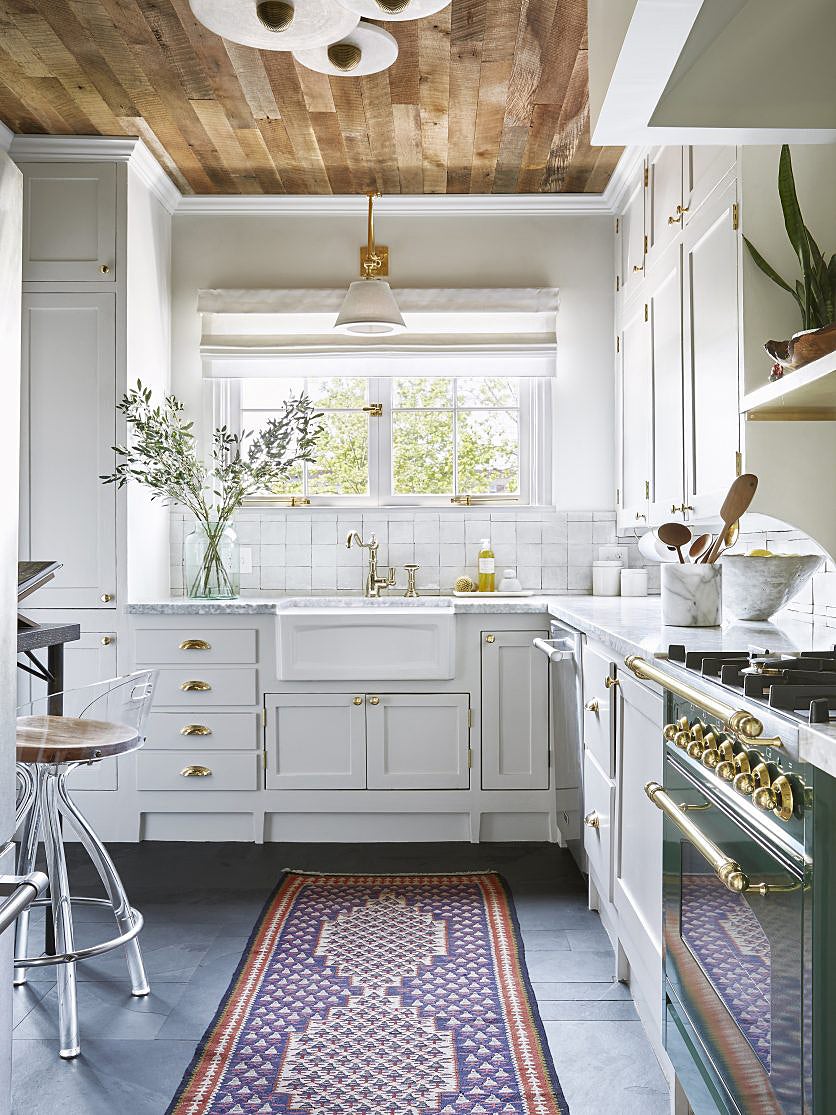We’re Demystifying How to Find the Best Paint for Kitchen Cabinets
Yes, you can cover laminate.
Updated Oct 10, 2018 5:11 PM
We may earn revenue from the products available on this page and participate in affiliate programs.
You’ve heard this before: Painting your kitchen cabinets is the easiest way to make the space look brand-new. But how simple is it, really, especially if you’ve never tackled such a project before? You may be thinking all hope is lost if you have ’90s laminate cabinets or your “wood” cupboards are actually veneer. But it doesn’t have to be. We tapped the top paint experts to give us all the tools for a successful transformation, no matter what surface or level of experience you’re working with.
From how to prep to choosing the best paint for kitchen cabinets, they gave us the full lowdown. Brighten your space with airy white doors or turn those dark brown wood fronts into glossy navy showpieces—the paint chip deck is the limit.
A Few Things to Keep in Mind
Prep: We know you’re eager to get started, but Mike Mundwiller, field development manager at Benjamin Moore, recommends removing the doors and drawers from the hinges and labeling every piece you take off to make reassembling easier later. Then wipe all the areas with a sponge—Mundwiller suggests a grease-cutting cleaner—to get rid of any dirt and oil. Rinse with clean water, and once the surface is dry, sand it with 100-grit sandpaper. You can also use a water-based deglosser for this part if you don’t want to put in all that elbow grease (it’s much easier than sanding). Last but not least, grab a tack cloth to remove any residual dust.
Primer: Primer is all about concealing any imperfections or rough marks to provide a smoother surface for your top layer of paint to grip onto. For wood this likely means applying a few coats to fully cover the grain. For MDF, Mundwiller recommends testing an inconspicuous area for compatibility with your primer (not all of them react the same). No matter what method you’re using, don’t forget the applicators. “You can do all the proper prep and employ the best techniques, but if you use a poor-quality applicator, your results may not be the best,” he says. “Invest in your tools just as you would invest in the products you use.” If any bubbles or drip marks do appear, feel free to lightly sand things down again.
Color: Keep the hue you’re using in mind. “It’s important to use an undercoat in the same tone as the door color to get a saturated result, especially if you’re going from light to dark,” says Farrow & Ball brand ambassador Patrick O’Donnell. If the room has a northern or eastern exposure, for instance, it might be a good idea to go darker. “A duck green would look stunning with soft pink walls; painting an ill-lit space in white or a light color can end up feeling dull,” he says. In the end, go with shades you are naturally drawn to rather than trends. “Kitchen spaces are often the most expensive rooms to outfit in the house, so you’ll want a color that has integrity,” he adds. Then pick up a paintbrush and get rolling.
Our Favorite Finishes
For Laminate and Veneer: Satin Enamel, Portola Paints
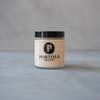
Some surfaces, like laminate and veneer, aren’t really meant to be painted, but Jamie Davis, cofounder of Portola Paints, has hope: “I have used our Hybrid system in my kitchen over existing laminate cabinet fronts and had great results. They might not last as long or be as durable, but I was able to completely transform my space. I sanded and primed prior to applying two coats of our Satin Enamel.” The Portola secret formula combines the best of both worlds—traditional oil and water-based acrylic for a paint that’s environmentally friendly and as hard-wearing as high gloss in a satin finish.
For Easy Cleanup: Emerald Urethane Enamel, Sherwin-Williams
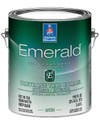
If you are tired of staring at greasy fingerprints and food marks or afraid of washing away all your work with a sponge that happens to be a bit too abrasive, rest assured the Emerald line by Sherwin-Williams is designed with high-touch surfaces in mind. Similar to a traditional oil-based formula, enamel dries into a hard, durable surface no matter the finish—choose between satin, semigloss, and gloss—to take on the toughest scrubber (and any mistakes or drips during the process can be easily cleaned up with soap and water). With more than 1,500 colors to choose from, you won’t have to sacrifice beauty for performance either.
For a Smooth Finish: Advance, Benjamin Moore

A typical alkyd paint offers premium durability, but at a cost: It can take days to cure due to its high solvent content, which also means your kitchen is sure to suffer from the strong smell of high VOCs. But with Benjamin Moore’s waterborne alkyd line, Advance, you can achieve a satiny-smooth leveling without the trouble of oil. For best results, it’s always strategic to tackle tough corners like arched overlays with a smaller, fine-tip brush before reaching for the foam roller and finishing things off with a few thin top coats.
For Quick Drying: Cabinet Coat, Insl-X
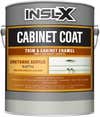
No priming is necessary with Insl-X’s Cabinet Coat, even for prepainted doors. Complete an inexpensive facelift in a day’s time thanks to its fast-drying technology—it’s safe to touch in an hour and can be recoated in six. This specialty paint from Benjamin Moore is a urethane-reinforced acrylic offered in both a semigloss and a satin finish that can tackle hard-to-coat surfaces, even a varnish, and aged, worn doors for a quick kitchen refresh.
For High Drama: Full Gloss, Farrow & Ball
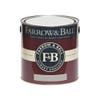
With a 95 percent sheen and nearly reflective finish, there may not be anything glossier or more dramatic than Farrow & Ball’s Full Gloss. The luxurious look of a high shine is also a practical option—in fact you should have ensured protection for up to six years against everything from moisture to fading to peeling, so you can wipe without worry. Want an ultrasmooth or high-gloss look? The secret, according to O’Donnell, is spraying two top coats of Full Gloss instead of using a roller.
Our Favorite Primers
For Laminate: Extreme Bond, Sherwin-Williams
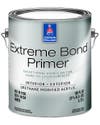
The biggest challenge with laminate and veneer surfaces is getting the paint to stick in the first place, which is why Mundwiller advises using a bonding primer with super adhesion, like Sherwin-Williams’s Extreme Bond. You don’t label a product ‘extreme’ for nothing—this water-based acrylic primer is guaranteed to coat all sorts of slick surfaces (yes, even tile) so you can skip the sanding and get straight to painting. The best part? Just one coat is all you need for a Gorilla Glue effect that’s compatible with nearly every type of top coat, even epoxies, for extra protection against daily wear and tear.
For Veneer: Bulls Eye 1 2 3, Zinnser
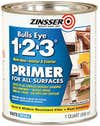
Veneer cabinets are no match for the Rust-Oleum Bulls Eye 1 2 3. Promising to stick to both indoor and outdoor surfaces, including concrete, this water-based acrylic primer is also low-odor and fast-drying, meaning you can seal stains and tannins in under an hour. Most primers require no lower than 50 degrees to guarantee application success, but the Zinnser formula can handle temperatures as low as 35 degrees. It’s the most budget-friendly primer, too: For no more than $10, you can coat your cabinets without ever having to pick up a piece of sandpaper.
For Unfinished Wood: Premium Wall & Wood Primer, Sherwin-Williams
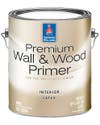
When it comes to unfinished wood, experts suggest seeking a primer with high coverage—like Sherwin-Williams’s Premium Wall and Wood Primer—as some species are known to cast color. Red oak’s pink undertones and walnut’s naturally dark character variation, for example, are strong enough to peep through the paint. Mundwiller’s advice: Also be aware of the grain. “Oak can have a deep grain, so if you want a smooth surface, multiple coats of primer may be needed,” he says. That’s why this product is so ideal; it masks any imperfections, even filling dimples and knot holes, in less coats compared to your average primer.
For Hard-to-Coat Surfaces: Stix Waterborne Bonding Primer, Insl-X
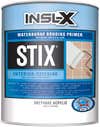
Don’t feel like stripping your previously painted cabinets? Try Stix. This acrylic, urethane-bonding primer is no match for the glossiest of paints, and a coat or two should hide any original color in no time. It’s used regularly by professional painters to tackle the trickiest of materials, like metal, concrete, stucco, and vinyl tile, so your cabinets should be no sweat, even those with uneven finishes. One quart can help cover anywhere from 75 to 100 square feet of surface area, and low VOCs means you can avoid dizzying smells. One more sweet bonus: All you need for cleanup is soap and water.
For Dark Colors: Interior Wood Primer & Undercoat, Farrow & Ball

If you’re looking for an ultra-smooth, neutralizing base, Farrow & Ball’s primer is as velvety smooth and satisfying to apply as its finishing top coats (they also make for the perfect pair). An easily applicable undercoat, this primer is offered to tackle four different wood tones—white and light; red and warm; mid; and, of course, dark—to guarantee full coverage. Workable with both previously painted or unfinished wood cabinets, it’s best to use a high-quality roller to avoid harsh brush marks.
